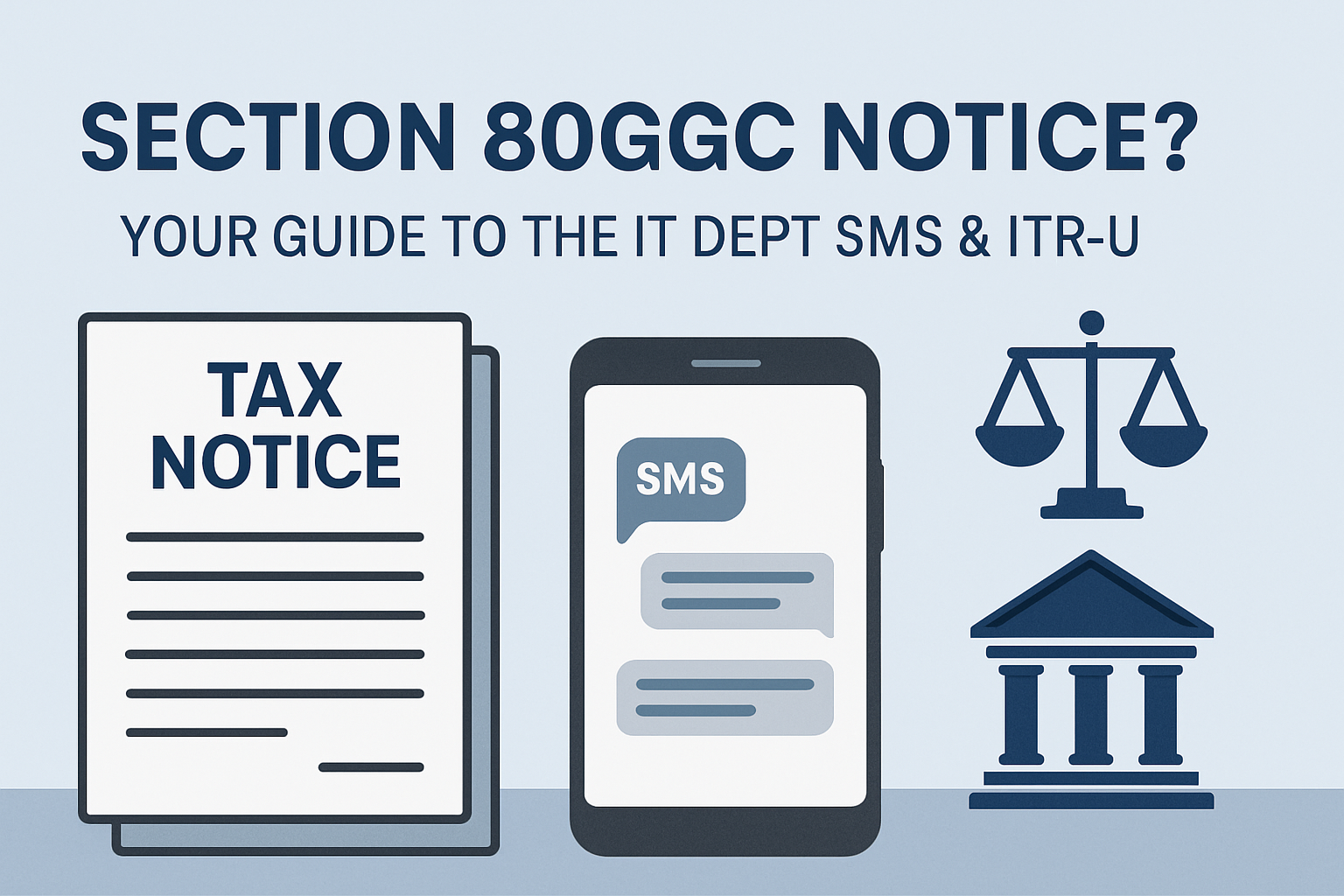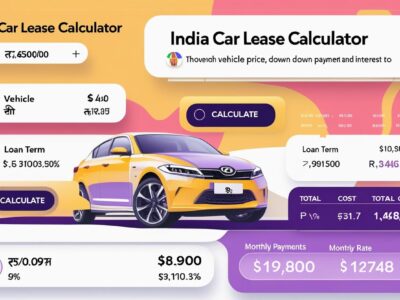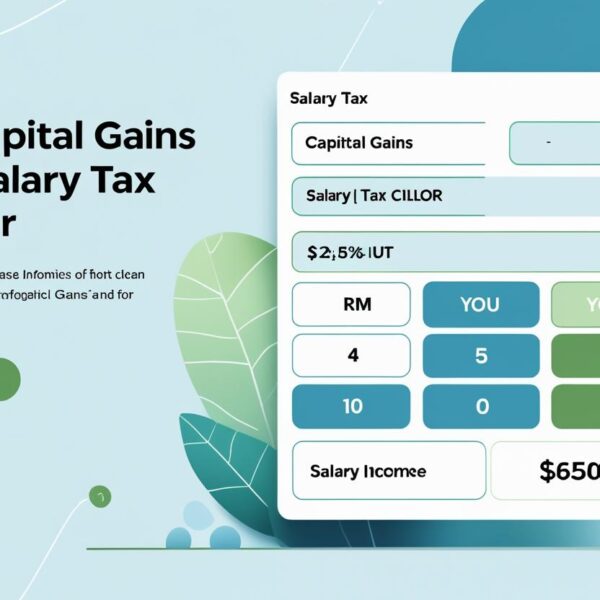India’s new share buyback tax rules, effective for all offers after October 1, 2024, have completely changed the landscape for investors. What was once a simple price arbitrage has been transformed into a complex tax-planning decision. Using the Infosys 2025 buyback as a detailed case study, this guide provides a deep financial analysis of the new two-part mechanism: the “deemed dividend” (taxed as Income from Other Sources) and the simultaneous creation of a “capital loss.” We cover the strategic value of this loss (STCL vs. LTCL), the critical role of the Acceptance Ratio (AR), and provide a calculator to model if tendering is profitable for your specific tax slab.
A Financial and Tax Analysis of Share Buybacks in India
Updated: October 13, 2025 | Analysis of the new tax regime (post-Oct 1, 2024).
Executive Summary: A New Era for Buybacks
The tax regime implemented by the Finance (No. 2) Act, 2024, fundamentally alters the decision for all shareholders. This applies to all buybacks on or after October 1, 2024.
A buyback is no longer a simple premium-arbitrage opportunity. It has been transformed into a complex tax-planning instrument.
- Income Treatment: The entire buyback proceed is now treated as “Income from Other Sources” and taxed at your personal income tax slab rate.
- Loss Generation: Concurrently, the transaction generates a capital loss equivalent to your entire cost of acquisition for the tendered shares.
- The Profit Paradox: This new treatment makes the buyback immediately loss-making (on a net cash basis) for investors in higher tax brackets. It is, conversely, highly profitable for investors in low or nil tax brackets.
- The Strategic Value: The buyback’s utility for a high-slab investor lies in its ability to create a valuable capital loss asset. This loss can be strategically used to offset other taxable capital gains.
The decision to tender shares is no longer simple. It is a highly personal, technical decision that must be based on a quantitative assessment of your personal tax slab, your other capital gains, and the final Acceptance Ratio (AR) of the offer.
Real-World Example: Infosys 2025 Buyback
To understand the law, we will use the parameters from the Rs 18,000 crore Infosys 2025 buyback as our working example.
Key Offer Parameters
- Buyback Price: Rs 1,800
- Total Size: Rs 18,000 Crore
- Total Volume: 10 Crore Shares (2.41%)
- Record Date: Nov 14, 2025
- Last Date to Buy: Nov 13, 2025 (T+1)
Retail vs. General Category
SEBI mandates that 15% of the buyback offer is reserved for “small shareholders.”
Definition: A shareholder holding shares with a market value of **not more than Rs 2,00,000** as of the record date.
This reservation typically results in a higher Acceptance Ratio (AR) for the retail category.
Understanding the Two-Way Arbitrage
The buyback offer creates two distinct types of arbitrage opportunities: a price arbitrage and a tax arbitrage. Your profile dictates which one you are pursuing.
A. The Price Arbitrage
This is the simple, direct profit from the price gap. It is the primary goal for low-tax investors.
- Offer Price: Rs 1,800
- Market Price: Rs 1,550
- Gross Profit: Rs 250
An investor in the 0% slab gets to keep this full Rs 250 (net of their Rs 0 tax), making it a clear arbitrage win.
B. The Tax Arbitrage
This is a sophisticated tax-harvesting play. It is the primary goal for high-tax investors.
- Action: Tender 1 share (cost Rs 1,550).
- Result 1: Pay 30% tax on Rs 1,800 = (Rs 540).
- Result 2: Generate a tax loss asset of (Rs 1,550).
- Value: This asset saves 30% on *other* gains = Rs 465.
You are effectively “paying” Rs 540 in tax to “create” a tax asset worth Rs 465. This is only logical if you have existing gains to offset.
The New Tax Paradigm (Post-Oct 1, 2024)
The Finance (No. 2) Act, 2024, shifted the entire tax burden from the company to the shareholder using a new, two-part mechanism.
Comparative Tax Treatment
| Parameter | Old Regime (Before Oct 1, 2024) | New Regime (Infosys 2025 Buyback) |
|---|---|---|
| Primary Taxpayer | The Company | The Shareholder (You) |
| Governing Law | Sec 115QA (Company Tax) Sec 10(34A) (Shareholder Exemption) |
Sec 2(22)(f) (Deemed Dividend) Sec 46A (Capital Loss) |
| Shareholder Income | Tax-Exempt | Taxed as “Income from Other Sources” |
| Taxable Base | Company pays ~23.3% on profit | Shareholder pays Slab Rate on Entire Proceed (all Rs 1,800) |
| Capital Gains | Not applicable for shareholder | Full Cost of Acquisition is generated as a Capital Loss |
The Two-Part Tax Mechanism
Visual: The Two-Part Transaction
Part 1: The “Deemed Dividend” (Income)
A new clause, Section 2(22)(f), redefines the buyback payment as a “dividend.”
- The entire Rs 1,800 per share is “Income from Other Sources” (IFOS).
- It is taxed at your personal income tax slab rate.
- You cannot deduct your purchase cost from this income.
Part 2: The “Capital Loss” (Cost)
Section 46A was amended to state the “consideration received” for capital gains is “NIL.”
- Sale Price (per Sec 46A): Rs 0
- Less: Your Cost (e.g.): (Rs 1,550)
- Result: (Rs 1,550) Capital Loss
Interactive Calculator: Is the Buyback Worth It?
Use this calculator to model your specific situation. The “Full Strategic Value” calculation (Option B) is the most important. It determines the true value of tendering if you have other gains to offset.
Chart: Immediate Cash Outcome by Tax Slab
This chart visualizes the “Immediate Cash Comparison” (Option A). It compares selling in the market (at Rs 1,550) versus tendering (at Rs 1,800). The net cash from tendering falls sharply as the tax slab increases, falling below the market price at the 15% slab.
Strategy: The “Capital Loss” Asset
The Cardinal Rule: No Inter-Head Set-Off
The most important rule is that the loss generated from the buyback *cannot* be used to reduce the tax on the buyback *income*.
- The “deemed dividend” is taxed under “Income from Other Sources” (IFOS).
- The loss is generated under “Capital Gains.”
The Income Tax Act prohibits setting off a “Capital Gains” loss against “IFOS” income. The tax on the Rs 1,800 must be paid, and the loss can only be used against other, separate capital gains.
The STCL vs. LTCL Strategic Matrix
The holding period of your shares is a critical decision. A loss from shares held 12 months or less is a Short-Term Capital Loss (STCL). A loss from shares held longer is a Long-Term Capital Loss (LTCL).
STCL is a more flexible and valuable asset, as it can be set off against *both* short-term and long-term gains.
| Loss Type Generated | Offset vs. STCG? | Offset vs. LTCG? | Offset vs. Other Income? |
|---|---|---|---|
| STCL (Held $\le$ 12 months) | YES | YES | NO |
| LTCL (Held > 12 months) | NO | YES | NO |
Strategic Action Plan
- If you have **Short-Term Capital Gains** (e.g., from F&O), you **must tender shares held $\le$ 12 months**. This generates the STCL needed to offset those gains.
- If you tender long-term shares, you will generate an LTCL, which *cannot* be set off against your STCG. This would be a significant tax-planning error.
- Any unused loss can be **carried forward for 8 subsequent assessment years**, provided you file your ITR by the original due date.
The Critical Role of Acceptance Ratio (AR)
You cannot tender all your shares. The company only buys back a small portion (2.41% for Infosys). The Acceptance Ratio, or AR, is the percentage of your tendered shares that the company will actually accept.
The AR is the single most important variable for modelling your profit. It is announced *after* the offer closes.
Expected AR: Retail vs. General
Because 15% of the offer is reserved for retail (holding < Rs 2 Lakh), the AR is always higher for the retail category.
Typical AR Estimates
- Retail Category (15% Quota): 30% – 60% Expected AR
- General Category (> Rs 2 Lakh): 5% – 15% Expected AR
This gap is the reason many investors split their holdings across multiple family demat accounts to qualify for the retail category in each.
Breakeven AR
The “Breakeven AR” is the minimum acceptance rate you need for the (loss-making) tender to be more profitable than selling all your shares in the open market today. This only applies to high-slab investors who are harvesting tax losses.
This calculation is complex as it depends on the “Blended Strategy”—what you do with the shares that are returned to you.
Scenario Modelling (The Blended Strategy)
A realistic analysis must assume a partial acceptance. Your final profit is a *blend* of the shares accepted in the buyback and the shares returned to you (which you then sell in the market).
Example: Blended Return (30% Slab Investor)
Assume you tender 100 shares, your cost is Rs 1,550, and the retail AR is 30%.
Part A: 30 Shares Accepted at Rs 1,800
- 1. Net Cash Received (Rs 1,800 * 30 * (1 – 0.30 tax)): Rs 37,800
- 2. Tax Asset Created (Rs 1,550 * 30 * 0.30 tax saving): Rs 13,950
- Total Value (Part A): Rs 51,750
Part B: 70 Shares Returned (Sold at Rs 1,550)
- 1. Cash Received (Rs 1,550 * 70): Rs 108,500
- 2. Capital Gains Tax (Rs 0 gain): Rs 0
- Total Value (Part B): Rs 108,500
Blended Result
- Total Value (A + B): Rs 160,250
- Baseline (Selling all 100 at Rs 1,550): Rs 155,000
- Net Profit from Tendering: Rs 5,250
As this model shows, a 30% slab investor with other gains makes a profit by tendering, *even with a 30% AR*, because of the high value of the tax loss asset.
Practical Application and Reporting
Tax Deduction at Source (TDS)
You will not receive the full Rs 1,800. The company is obligated to deduct 10% TDS (for residents with PAN) on the “deemed dividend” payment.
- Buyback Price: Rs 1,800
- TDS (10%): (Rs 180)
- Cash in Bank: Rs 1,620
If you are in the 30% slab, you will still owe the remaining 20% tax (plus cess) when filing your return. The TDS is only a credit.
ITR Filing Template (Manual Adjustment Required)
Your broker’s Tax P&L report will likely be incorrect. Platforms like Zerodha Console explicitly warn that you must **manually categorise** buybacks occurring after Oct 1, 2024.
You cannot simply import the data. You must manually make these adjustments in your ITR:
Step 1: Go to “Schedule Income from Other Sources (IFOS)”.
Action: Report the full buyback proceed (e.g., Rs 1,800 per share) as “Dividend Income”. Claim your Rs 180 TDS credit here.
Step 2: Go to “Schedule Capital Gains”.
Action: Manually create a new entry for this sale.
- Set “Full Value of Consideration” to Rs 0 (NIL).
- Enter your “Cost of Acquisition” (e.g., Rs 1,550 per share).
- The form will automatically calculate the Capital Loss of (Rs 1,550).
This three-step manual process correctly reports both the income and the loss.
Final Verdict: A Profile-Based Recommendation
The decision to tender is entirely dependent on your individual tax profile.
Profile 1: Low-Slab Investor (0-15% Bracket)
Verdict: TENDER ALL ELIGIBLE SHARES.
Your net-of-tax cash receipt will be higher than the open market price. This is a direct and profitable arbitrage. The generated capital loss is an added bonus.
Profile 2: High-Slab Investor (20%+) with NO Capital Gains
Verdict: DO NOT TENDER. SELL IN THE OPEN MARKET.
Tendering results in an immediate net-of-tax cash loss. You will be left with a large capital loss asset that has zero value to you, as you have no gains to offset.
Profile 3: High-Slab Investor (20%+) WITH Capital Gains
Verdict: STRATEGICALLY TENDER. This is the optimal “Tax Harvesting” scenario.
The total effective value (Cash + Tax Asset) from tendering is higher than selling in the market. Remember to tender short-term shares if you have STCG to offset.
Profile 4: The NRI Investor
Verdict: LIKELY TENDER. (Must consult DTAA).
You must confirm the dividend tax rate in your specific DTAA. If the rate is 15% or lower, this is a highly attractive proposition. You may get a high net cash proceed *and* the full capital loss asset.
Special Scenarios and Edge Cases
Case 1: Employee Stock Options (ESOPs)
If you tender shares acquired via ESOP, your “Cost of Acquisition” is the Fair Market Value (FMV) on the date of exercise. This is the same value on which you already paid perquisite tax. Your cost is *not* the exercise price.
Case 2: Pledged Shares
You must un-pledge your shares before the tender offer window closes. Pledged shares cannot be tendered. You must contact your broker to release the margin, which may require adding cash or other collateral.
Case 3: Section 112A “Grandfathering”
If your shares were acquired before Jan 31, 2018, your “Cost of Acquisition” for the capital loss is the *higher* of your actual cost or the FMV on that date. This can create a much larger, more valuable LTCL.
Detailed Frequently Asked Questions (FAQ)
How is the Rs 2 Lakh retail limit calculated?
It is the total market value of your shares in that company (across all folios) as of the Record Date. It is *not* based on your purchase price.
What happens if I bought shares on different dates (FIFO)?
The Income Tax Act mandates the First-In, First-Out (FIFO) method. The shares you bought *first* will be deemed tendered first. This is critical for determining if the resulting loss is STCL or LTCL.
What if I do nothing and ignore the buyback?
Nothing. Your shares remain in your demat account. You will not receive any payment or have any tax liability. You simply miss the opportunity.
Is this “deemed dividend” eligible for Section 80M deduction?
No. Section 80M (inter-corporate dividend deduction) is only available to domestic *companies*. It is not available for individual investors.








